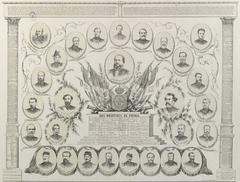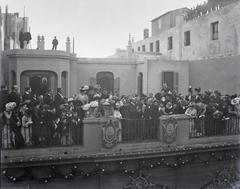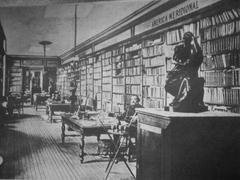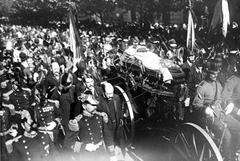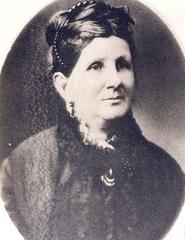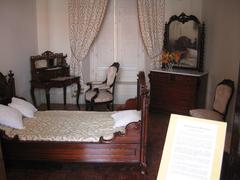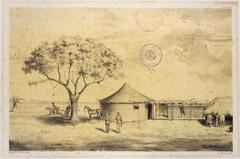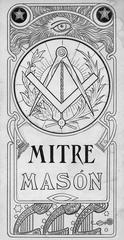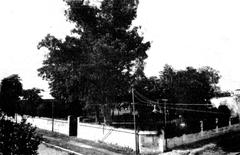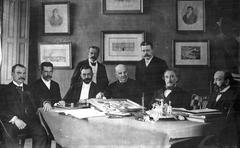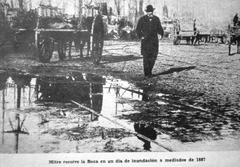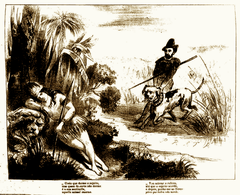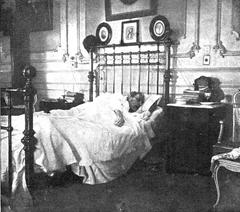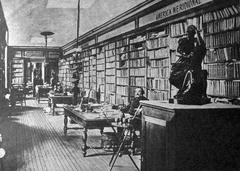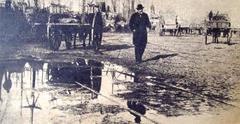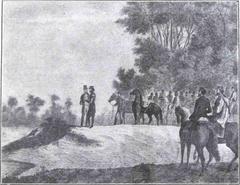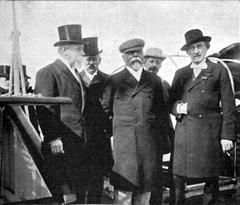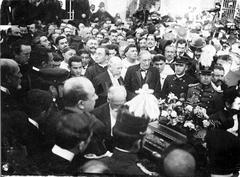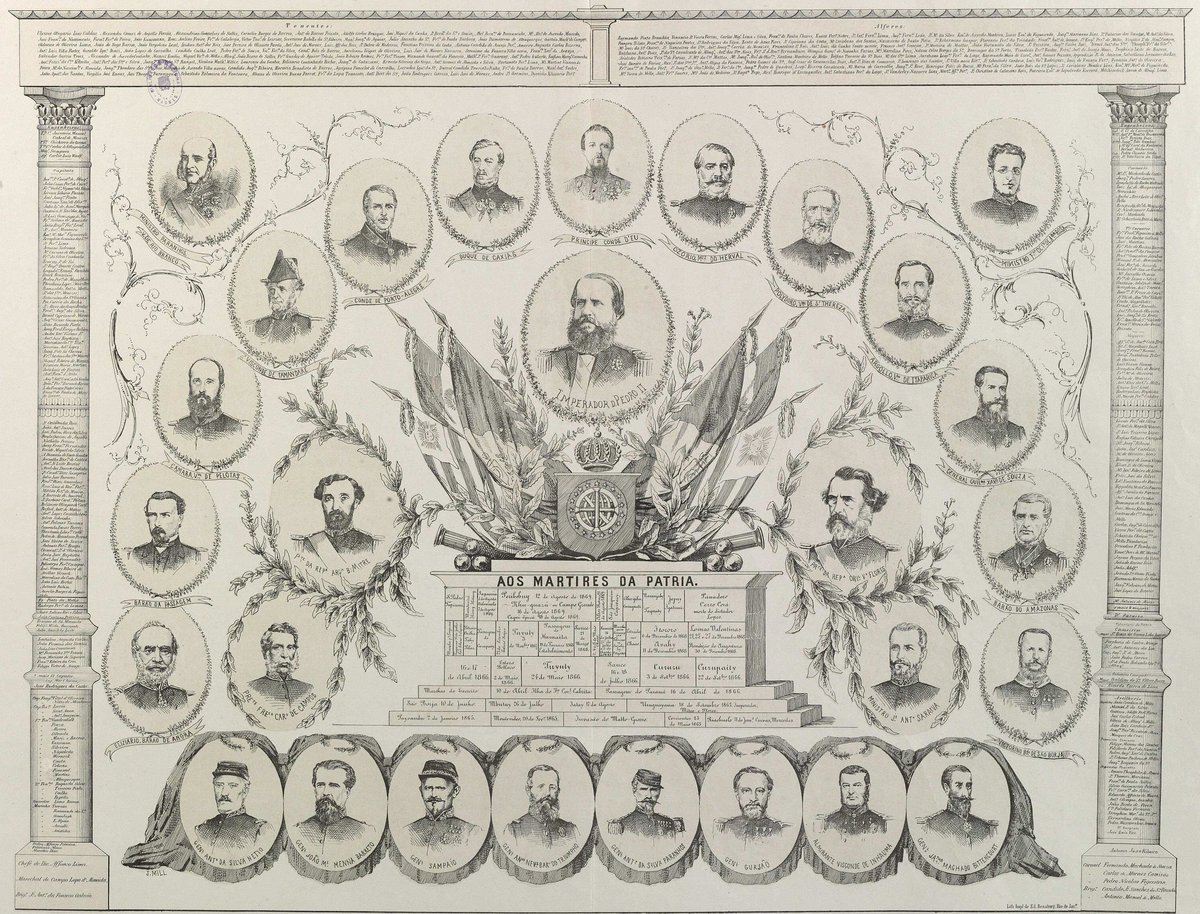
Bartolomé Mitre: Visiting Hours, Tickets, and Historical Sites in Buenos Aires
Date: 14/06/2025
Introduction
Buenos Aires, renowned for its vibrant history and cultural depth, invites visitors to journey through Argentina’s past by exploring its monuments and museums. Among the most significant are the Bartolomé Mitre Monument and the Museo Mitre, both central to understanding the nation’s political, intellectual, and cultural evolution. Bartolomé Mitre (1821–1906) was Argentina’s first president of a unified nation, a distinguished military leader, historian, journalist, and a key figure in the country’s modernization. His influence is honored not only through the grand Monumento a Bartolomé Mitre in Recoleta’s Plaza Mitre but also in the Museo Mitre, his former home and now a museum safeguarding his personal artifacts and manuscripts.
This detailed guide provides historical background, practical visitor information, accessibility notes, and tips for exploring both the Bartolomé Mitre Monument and Museo Mitre. It also highlights nearby attractions, ensuring you can fully immerse yourself in Buenos Aires’ rich cultural heritage.
Table of Contents
- Bartolomé Mitre: Life, Political Career, and Legacy
- Visiting the Bartolomé Mitre Monument
- Nearby Attractions
- Practical Tips for Visitors
- Museo Mitre: Historical Background and Visitor Guide
- FAQs
- Enhance Your Visit: Multimedia, Apps, and Walking Tours
- Legacy and Significance
- References
Bartolomé Mitre: Life, Political Career, and Legacy
Early Life and Rise to Prominence
Born in Buenos Aires in 1821, Bartolomé Mitre experienced a nation divided by internal strife between Federalists and Unitarians. Aligning with the Unitarians, Mitre was active in military and political circles from a young age, enduring periods of exile that honed his diplomatic and leadership skills.
Presidency and National Unification
Mitre’s rise culminated in becoming president of a unified Argentina (1862–1868), overseeing the consolidation of national unity, modernization of the state, and a focus on education and infrastructure. His administration moved the government’s seat to Buenos Aires, choosing the site for the Casa Rosada (turismo.buenosaires.gob.ar), solidifying the city’s role as the nation’s political heart.
Military Leadership
During the War of the Triple Alliance (1864–1870), Mitre served as commander-in-chief of Argentine forces, shaping the conflict’s course and leaving a controversial but significant legacy in South American history.
Contributions to Culture and Historiography
Mitre was also a prolific historian, journalist, and founder of “La Nación,” one of Argentina’s most influential newspapers (La Nación). He authored key biographies and historical works, helping to shape the national narrative and promote education and culture.
Visiting the Bartolomé Mitre Monument
Location and Description
The Bartolomé Mitre Monument stands at Plaza Mitre, at the intersection of Avenida del Libertador and República del Líbano in the Recoleta district. Designed by David Calandra and Eduardo Rubino, the monument features a striking bronze equestrian statue atop a red granite base, surrounded by allegorical Carrara marble figures symbolizing Mitre’s contributions to unity and progress (turismo.buenosaires.gob.ar, GPSmyCity).
Hours, Admission, and Accessibility
- Hours: The monument is located in a public plaza and is accessible 24/7.
- Admission: Free.
- Accessibility: Plaza Mitre is wheelchair accessible with paved paths and ramps.
- Photography: Early morning and late afternoon offer the best natural lighting for photographs.
Art and Symbolism
Inaugurated in 1927, the monument’s bronze and marble sculptures pay tribute to Mitre’s diverse roles as leader, historian, and unifier. Its location, surrounded by embassies and French-style mansions, reflects the cosmopolitan spirit of Recoleta.
Nearby Attractions
- Museo Nacional de Bellas Artes: Home to Argentina’s finest art collection.
- Recoleta Cemetery: Resting place of notable Argentines, including Mitre.
- Museo Mitre: Former residence and museum dedicated to Mitre’s life.
- Other Statues in Plaza Mitre: Commemorating figures such as Gibran Khalil Gibran and George Canning (turismo.buenosaires.gob.ar).
- Biblioteca Nacional: Houses archives related to Mitre’s historical work.
- Plaza Rubén Darío: Adjacent green space.
Practical Tips for Visitors
- Best Time to Visit: Spring (September–November) for pleasant weather and blooming jacaranda trees (ytravelblog.com).
- Getting There: Easily accessible by public transport; close to Recoleta subway station and multiple bus lines.
- Safety: Recoleta is a safe, upscale area. Standard city precautions apply.
- Guided Tours: While there are no official tours for the monument, many walking tours of Recoleta include it as a stop. Audio guides are available via apps like Audiala.
Museo Mitre: Historical Background and Visitor Guide
Historical Background
Located at San Martín 336, the Museo Mitre occupies a colonial-era house dating to 1785. General Mitre lived here from 1860 until his death, and the building has served as a museum since 1907. It was declared a National Historic Monument in 1942 (whichmuseum.co.uk).
Collections and Exhibitions
The museum’s permanent collection features:
- Personal Artifacts: Original furniture, clothing, and belongings of the Mitre family.
- Manuscripts and Documents: Drafts, correspondence, and official papers from Mitre’s career.
- Art and Memorabilia: Portraits, medals, and 19th-century artworks.
- Library: Extensive historical and literary holdings, many annotated by Mitre.
Temporary exhibitions explore themes in Argentine history and culture, often marking anniversaries or notable figures (whichmuseum.co.uk).
Architecture and Experience
The museum preserves original colonial features—adobe walls, courtyards, and period furnishings—offering an authentic glimpse into 18th- and 19th-century Buenos Aires domestic life.
Hours, Admission, and Tours
- Hours: Typically Tuesday to Sunday, from 1:00 PM to 6:00 PM. Confirm on the official website as times may vary.
- Admission: Free.
- Guided Tours: Available, often in Spanish; inquire for English-language guides.
- Accessibility: Limited due to the building’s historic nature.
FAQs
Q: What are the visiting hours for the Bartolomé Mitre Monument?
A: Accessible 24/7 in a public plaza.
Q: Is there an admission fee for the monument or museum?
A: Both are free to visit.
Q: Are guided tours available?
A: Walking tours often include the monument; the museum offers guided tours upon request.
Q: Is the museum accessible for those with mobility challenges?
A: Accessibility is limited; contact the museum for details.
Q: What other attractions are nearby?
A: Museo Nacional de Bellas Artes, Recoleta Cemetery, Biblioteca Nacional, and more.
Enhance Your Visit: Multimedia, Apps, and Walking Tours
- Apps: Download Audiala for audio guides and interactive maps.
- Walking Tours: Many thematic routes in Recoleta include these sites (GPSmyCity).
- Photography: Both sites offer excellent photo opportunities.
Legacy and Significance
Bartolomé Mitre’s vision for a unified, modern Argentina is reflected in the institutions, monuments, and museums of Buenos Aires. Exploring the Bartolomé Mitre Monument and Museo Mitre allows visitors to engage with the nation’s formative years and appreciate the enduring values of unity, education, and cultural richness.
References
- This is a sample text. (turismo.buenosaires.gob.ar)
- This is a sample text. (whichmuseum.co.uk)
- This is a sample text. (GPSmyCity)
- This is a sample text. (Lonely Planet)
- This is a sample text. (Casa Rosada)
